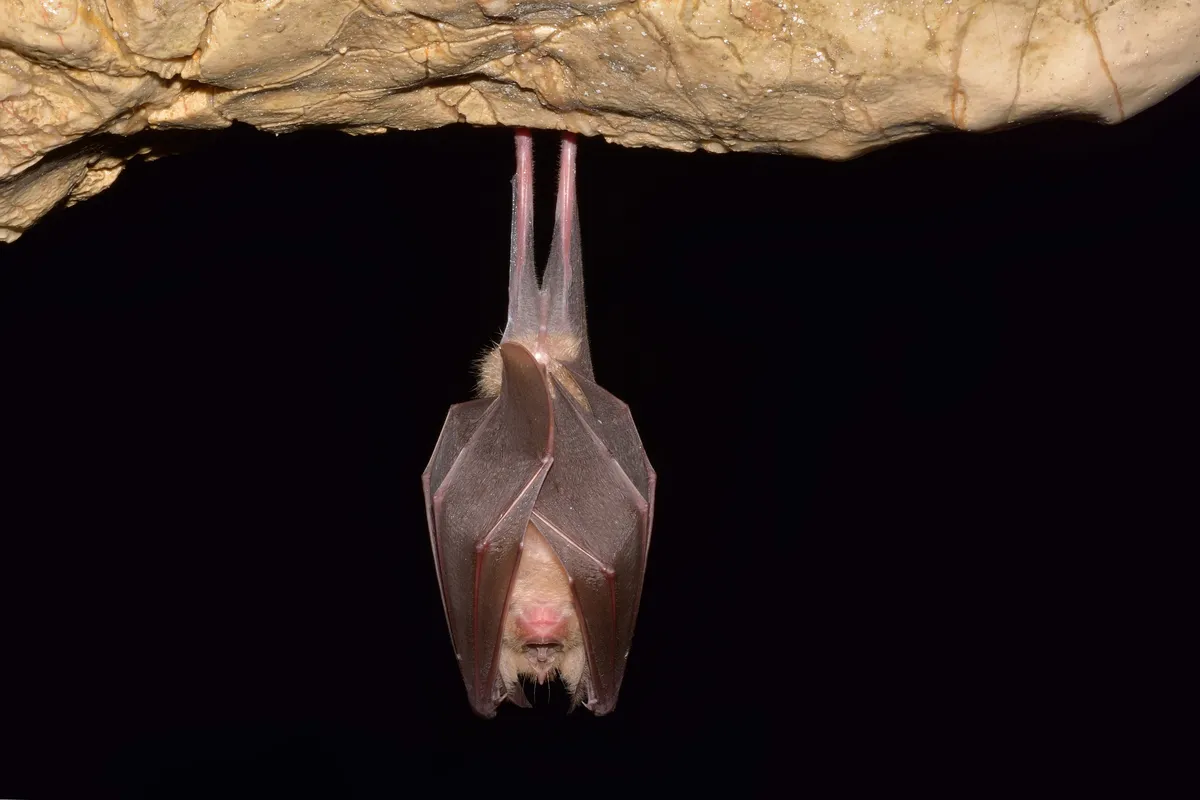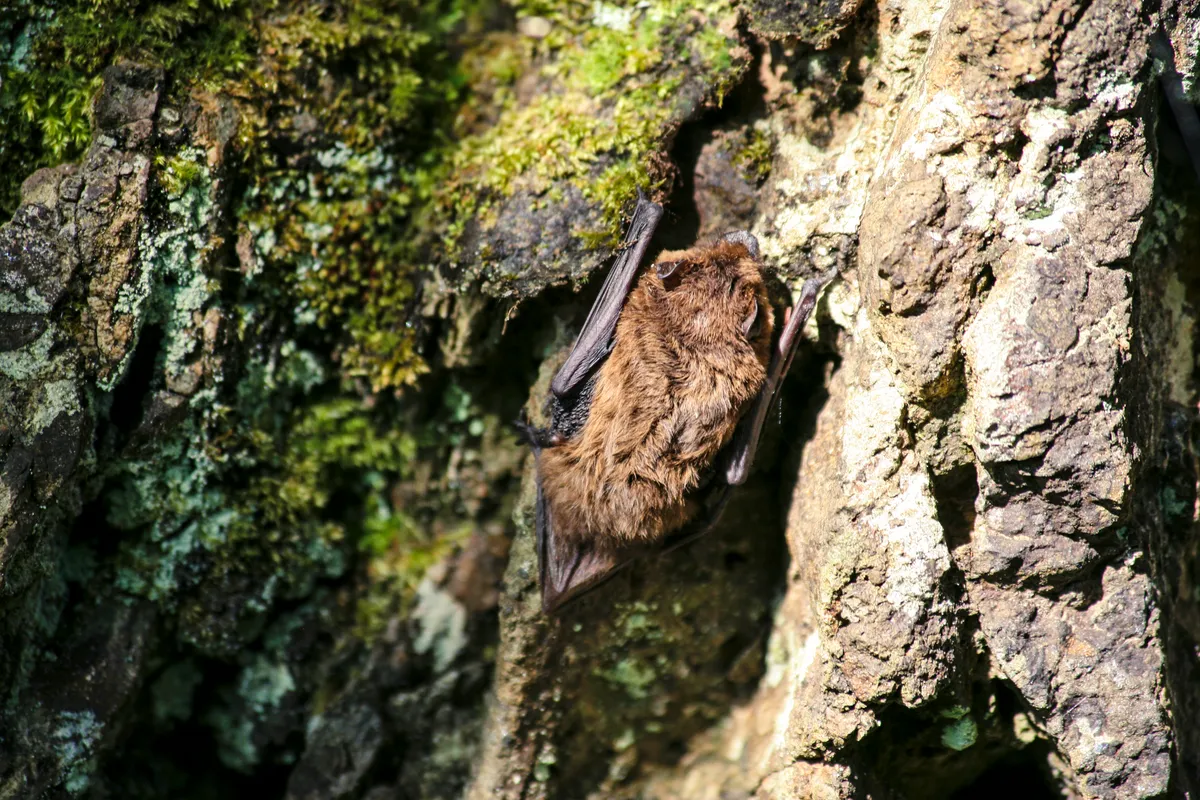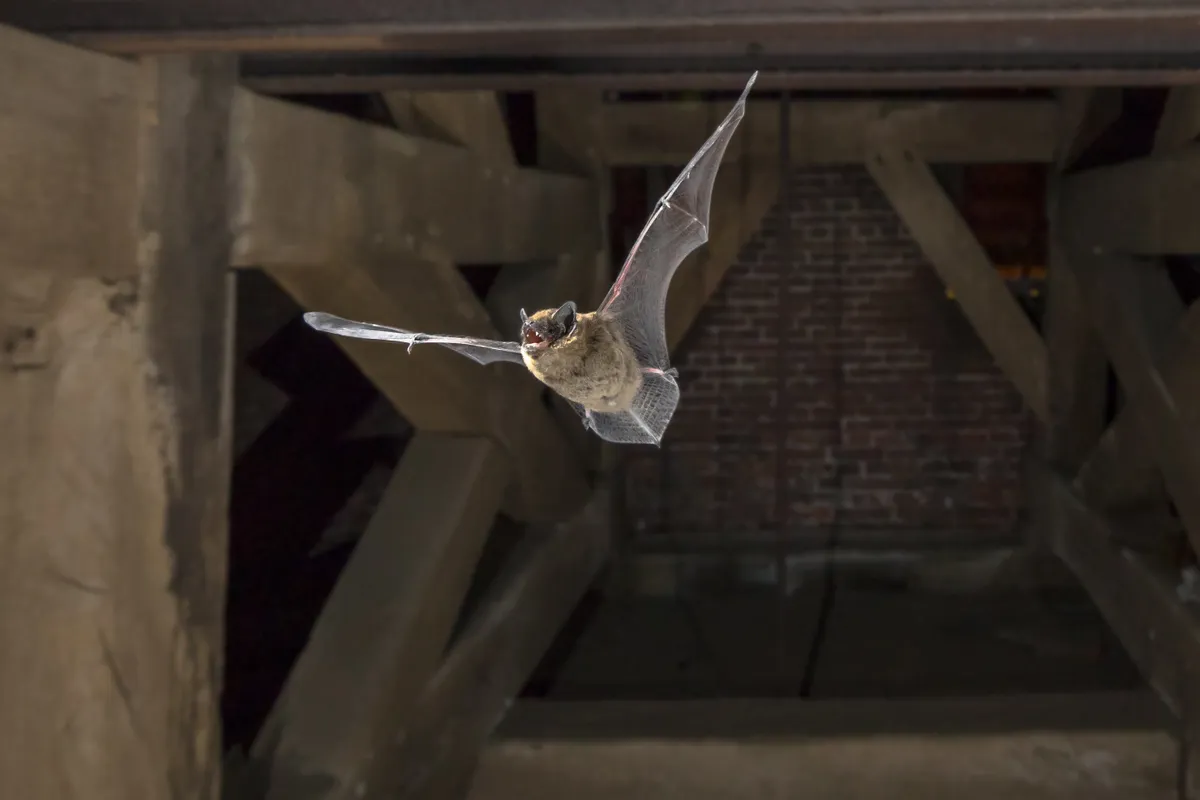As invertebrate prey dwindles in autumn, bats head to hibernation sites. These have a cool, stable air temperature and are often different from roosts used in spring and summer.
The bats slip into torpor and reduce the rate at which they burn off their fat reserves. High humidity is also important to cut the risk of dehydration, though bats will wake up occasionally to drink and forage during milder spells.

Licensed bat workers conduct surveys of hibernation sites such as caves, mines, tunnels and cellars. Some species, including greater and lesser horseshoes, are relatively easy to record because they tend to hang conspicuously from the roof, but other species often hide away in crevices and are harder to locate and identify.
In particular, the scarcity of winter records of common and soprano pipistrelles – our two most abundant and conspicuous species in summer – is really striking. So where do all our ‘pips’ go?

While hibernating pipistrelles are known at a few UK sites, it’s thought that the vast majority secretly tuck themselves away in buildings and trees. But they do turn up where least expected.
Callers to the Bat Conservation Trust helpline (0345 130 0228) have reported finding bats in such odd places as log piles and behind pictures on walls.
New survey methods developed in the Netherlands have revealed mass hibernation sites in tower blocks. If we follow suit in the UK perhaps we too will solve the mystery of where many of our pipistrelles spend the winter.

Did you know?
- In torpor a bat may breathe less than once an hour and its heartbeat can drop to 10 beats per minute.
- Some Nathusius’ pipistrelles, noctules and Leisler’s bats migrate from Britain in autumn to hibernate on the Continent.